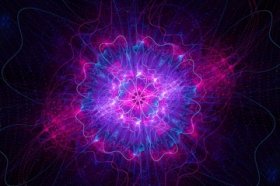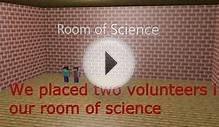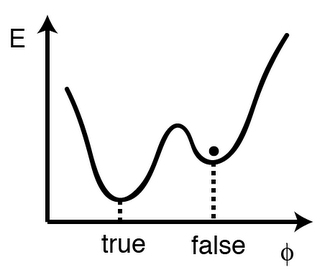
 |
| An artist's conception of the Higgs boson.
Credit: sakkmesterke/Shutterstock.com |
Editor's Note: This story was updated at 7:20 p.m. E.T.
For a subatomic particle that remained hidden for nearly 50 years, the Higgs boson is turning out to be remarkably well behaved.
Yet more evidence from the world's largest particle accelerator, the Large Hadron Collider (LHC) in Switzerland, confirms that the Higgs boson particle, thought to explain why other particles have mass, acts just as predicted by the Standard Model, the dominant physics theory that describes the menagerie of subatomic particles that make up the universe.
"This is exactly what we have expected from the Standard Model, " said Markus Klute, a physicist at the Massachusetts Institute of Technology and one of the researchers involved in the Higgs search.
The new results show that the Higgs boson decays into subatomic particles that carry matter called fermions — in particular, it decays into a heavier brother particle of the electron called a tau lepton, Klute said. This decay has been predicted by the Standard Model. Even so, the findings are a bit of a disappointment for physicists who were hoping for hints of completely new physics. [Top 5 Implications of the Higgs Boson Discovery]
God particle discovered
On July 4, 2012, scientists at the LHC announced they had found the Higgs boson, an elusive particle first proposed 50 years ago by English physicist Peter Higgs. In Higgs' conception, in the blink after the Big Bang, an energy field, now dubbed the Higgs field, emerged that imparts mass to the subatomic particles that trawl through it. Particles that are "stickier" and slow down more while traversing the field become heavier.
Because subatomic particles are either matter carriers called fermions, such as electrons and protons, or force-carrying particles called bosons, such as photons and gluons, the existence of the Higgs field implied an associated force-carrying particle, called the Higgs boson, which is like a ripple in that field, Klute said.
The 2012 discovery left little doubt that the Higgs boson exists, and Higgs and his colleague, François Englert, won the Nobel Prize for the theory in 2013. But there were still many unanswered questions. Is there one Higgs boson or multiple? If there are multiple, what are their masses? And just how do these different-flavored Higgs behave? [Nature's Tiniest Particles Dissected (Infographic)]
Well-behaved particle
Of the billions of collisions produced by the LHC every second, just a few hundred had the signature energy levels associated with the Higgs boson, Klute said.
When the LHC collaborators analyzed those Higgs events, they found about 6 percent of the elusive particles decayed into tau leptons, Klute told Live Science. And though not unexpected, the new results show no hint of additional Higgs bosons that would lend credence to alternate theories such as supersymmetry, which predicts that every particle currently known has a "superpartner" with slightly different properties.
Unanswered questions
The idea of the Higgs decaying to tau leptons was somewhat tacked onto the Standard Model after its creation, yet this "ad hoc addition to the Standard model turns out to be how nature does it, " Klute said.
But there are still a few pieces left to complete the picture predicted by the Standard Model, said Nitesh Soni, a particle physicist at the University of Adelaide in Australia, who works on a different experiment at the LHC that focuses on similar physics questions.
"The Higgs is predicted to decay into some other particles too, but those have relatively smaller decay rates and higher background" noise, making it too difficult to detect those particles from the current dataset, Soni said.
New physics?
Though the Standard Model has been stunningly successful at predicting behavior in the subatomic realm, there has to be more to the laws of nature, Klute said.
"My hope was that we would already find some new physics, " Klute said.
But he's not giving up hope yet. The hunt for new particles will continue once the LHC is turned on again at much higher energies in 2015, Klute said.
The new analysis of the LHC data was published yesterday (June 22) in the journal Nature Physics.
Editor's Note: This story was updated to add information on Nitesh Soni's research.
Follow Tia Ghose on Twitter and Google+. Follow Live Science @livescience, Facebook & Google+. Original article on Live Science.
INTERESTING VIDEO



 In quantum field theory, a false vacuum is a metastable sector of space that appears to be a perturbative vacuum, but is unstable due to instanton effects that may tunnel to a lower energy state. This tunneling can be caused by quantum fluctuations or the creation...
In quantum field theory, a false vacuum is a metastable sector of space that appears to be a perturbative vacuum, but is unstable due to instanton effects that may tunnel to a lower energy state. This tunneling can be caused by quantum fluctuations or the creation...








